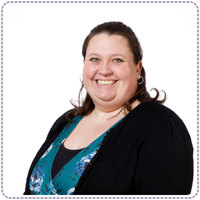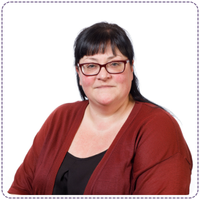Safeguarding
Coercive Control in Teen Relationships
When can love’s young dream become a nightmare? Preparing children for positive personal relationships and keeping themselves safe.
As children grow into their teenage years, many will begin to explore romantic relationships and start to figure out their own sexuality – a completely natural part of growing up.
For most, it’s an exciting time, but it can also be incredibly confusing. Alongside the usual teenage ups and downs, there’s the added pressure of social media, peer expectations and a whirlwind of hormones – it’s a lot to handle.
Teen relationships can be tricky to navigate at the best of times, but what happens when those relationships turn sour? When they become more harmful than healthy, more controlling than caring or even unsafe rather than supportive?
What kind of example does the world set for our children when it comes to relationships?
Through PSHE and RSE lessons, we do our best to equip children with the tools they need to build healthy, respectful and positive relationships. But this work is often made harder by the fact that many young people haven’t seen these kinds of relationships modelled in their own lives – so they don’t always know what healthy really looks like.
Add to that the constant stream of ‘picture-perfect’ couples on social media, and it becomes even more complicated. What’s portrayed online is often far from reality – and at its worst, can actually be quite damaging.
Popular shows like Love Island or Married at First Sight might be entertaining, but they often promote the idea that love is instant, effortless and always glamorous. We know real relationships are rarely that simple.
When young people are fed these kinds of unrealistic messages, it can leave them with confused ideas about what love and connection should look like – and that can leave them vulnerable to getting stuck in unhealthy or even harmful relationships.
Of course, for many teens, this stage of life is all part of growing up – learning what they want in a partner, experiencing those early heartbreaks and creating memories that help shape who they are. But we also can’t ignore that toxic and even dangerous relationships are becoming increasingly common. That’s why it’s so important that we teach children what respectful behaviour looks like, talk about red flags and support them in recognising when something doesn’t feel right.
Coercive Control
Coercive control refers to a pattern of controlling behaviours that create an unequal power dynamic in a relationship.
These behaviours give the perpetrator power over their partner, making it difficult for them to leave. Toxic and coercive relationships may start out like a dream, a young couple fall head over heels in love, become inseparable and for all to see they are the ‘perfect couple’.
There may be gifts and flattery, one partner may be charming and attentive and be seen to ‘lovebomb’ their partner. From outside this may seem sweet and both partners may seem happy with the situation, but this may not last for long and can result in one partner demonstrating power and control over the other, dictating what they can and can’t do, who they can and can’t see.
They may use emotional blackmail to ‘gaslight’ their partner’ to force them to doubt themselves. It can quickly turn into a very unhealthy, unequal relationship.
It’s time to make a change
The charity Women’s Aid campaigned for coercive control to become a criminal offence as although it does not always involve physical violence, it creates the same sense of fear, isolation and can be likened to being trapped or held hostage in the world created by the abuser. (Evan Stark, referenced by Women’s Aid online)
There has been an increase of reporting of coercive control year on year, which may be attributed to improvements made by the police in recognising incidents of coercive control and using the new law accordingly. Office for National Statistics
In the year ending March 2022, the number of recorded offences rose to 41,626, and the most recent statistics from year end 2023, state that the police recorded 43,774 instances of coercive control.
These figures indicate a significant increase in the recording of coercive control offences since 2018, when there were just over 9,000 such offences reported. This increase reflects the seriousness of the problem and highlights an urgency in our responses to teach children how to recognise when they might be in an unhealthy relationship.
If high-quality PSHE and RSE aren’t taught in school, children can be left vulnerable to engaging in dangerous relationships.
What are the indicators of coercive control?
These behaviours may include, but are not limited to:
- Excessive jealousy
- Phone checking and monitoring whereabouts
- Obsessive calling, texting, emailing and demanding constant contact or attention
- Isolating a partner from friends or family
- Getting upset or applying guilt when the partner spends time with other people
- ‘Gaslighting’- manipulating a partner to doubt their own sanity
- Controlling their partner’s clothes, movements, friends etc.
- Insults, belittling and nasty comments – often regarding appearance and their desirability to others
- Threats of violence, leaving or harming themselves as a result of the innocent partner’s actions
- Making one partner feel scared, nervous or like they are ‘walking on eggshells’ all the time
- Intentional humiliation and embarrassment – often in front of others
It is important to remember that coercive and controlling relationships do not only happen in the context of romantic relationships and many of these same inappropriate and dangerous behaviours can be related to friendships or other acquaintances where one partner holds considerable power over the other.
In some contexts, this can be related to gang culture, drug use or distribution and criminal or sexual exploitation.
Staff need to be aware of the signs of these also, e.g. relationships spanning a range of year groups – where older children may seek out younger children or children deliberately seek out more vulnerable peers in order to exploit them.
So, how can we start having these important conversations with children?
The key is to begin early. From the very start of their school journey, children need to learn what healthy relationships look like – not just through specific lessons, but in everyday school life, through the way we interact, speak to each other and resolve conflict.
These messages can (and should) be woven through the entire curriculum, but also taught directly and clearly. Here’s how we can do that effectively:
- Plan for it. Build detailed and age-appropriate lessons into PSHE and RSE that focus on relationships – what they are, how they’re built and how to spot when they go wrong.
- Start in Early Years. Even our youngest pupils can begin to learn about respect, kindness and personal boundaries. These messages should be revisited and reinforced each year as they grow.
- Make it real. Use real-life case studies, involve young people in the conversation and link up with charities and external organisations to bring extra voices and perspectives into the classroom.
- Teach self-worth. Help children understand their value, recognise their rights and know they never have to stay in an unhealthy relationship out of guilt, fear or a warped sense of love.
- Train your team. Staff need to be confident in spotting the signs of coercive or controlling relationships, knowing how to respond and supporting all those involved – with empathy and skill.
At a whole-school level, there are some great steps you can take to strengthen this work even further:
- Talk to your pupils. Find out what children and young people already know, what they’re experiencing, and where the gaps are. Their voices should shape your curriculum.
- Set up a safe reporting system. This could be an anonymous box or a digital method – whatever makes it easier for students to ask for help discreetly.
- Have trained go-to staff. Identify team members who can offer support and guidance, especially those with training in coercive and abusive relationships.
- Signpost to support. Make sure students know where they can go for help outside of school too – local charities, national helplines and online resources.
- Bring in lived experience. Survivors and experts can share their stories in a safe and thoughtful way, helping students connect and understand the impact of these issues.
And let’s not forget – the young person showing harmful behaviours may also be experiencing abuse themselves. It’s vital we approach these situations with care and fairness, supporting everyone involved as we work toward safer relationships for all.
Summary
Your response as a setting needs to have both proactive and reactive elements.
It should be clear where this is being taught in the curriculum and how it is linked to other subjects studied (for example- use of a particular text in English or a play studied in Drama) and there should be opportunities for more reactive action to be taken in response to specific situations.
We can’t control what happens outside our settings or the actions of our students, but we are able to provide them with the knowledge, skills and understanding needed to identify dangerous and coercive relationships and take actions to keep themselves safe.
If you found this blog useful, you may also be interested in reading the following blogs:
 Statutory Safeguarding Courses
Statutory Safeguarding Courses
SFE can provide comprehensive, supportive and implementable safeguarding training to suit your needs.
Book our highly regarded statutory DSL half-day Update and two-day Safeguarding and Child Protection for DSLs training today.
Book HereNEED TAILORED SAFEGUARDING SUPPORT AT YOUR SCHOOL?
Our expert advisers can provide in-school visits to deliver sessions on any specific safeguarding issues that are relevant to your setting. We also offer consultancy and a detailed safeguarding audit. We will work with you to understand your exact requirements.
Get in touch with us today if you’d like to discuss bespoke Safeguarding training for your school.
find out more About the Author
About the Author
Lucie Welch – Adviser, Services For Education

Lucie Welch has worked in the field of Primary Education for the last 15 years, holding the positions of Assistant Head of School, Designated Safeguarding Lead, Attendance Lead and Designated Teacher for Looked After Children. Through working across several local authorities and within multi-academy trusts, Lucie has garnered a passion for safeguarding and supporting children and young people to enable them to thrive.
At Services For Education, Lucie is an integral part of the Safeguarding team, sharing her expertise with schools, colleges, trusts, and other educational settings across the city of Birmingham and beyond. Dedicated to improving safeguarding practices in an actionable and impactful way, Lucie works closely with settings to provide bespoke training, supports with reflection on their own practices during Safeguarding audits and always strives to contribute to a better learning environment for all children. Through delivery of statutory training for DSLs and Safer Recruitment, Lucie works with colleagues in all age ranges and is a source of expertise within these areas.
Lucie also wears other important hats within the School Support Team. Not only is she dedicated to ensuring the safety and well-being of students through her role in safeguarding, but she also plays a key part in the PSHE/RSE and Health for Life teams. Additionally, Lucie partners with the Best Practice Network to deliver the Early Career Framework, supporting new teachers in their professional development.









